How did AlphaZero's approach to learning and playing chess differ from traditional chess engines like Stockfish?
AlphaZero represents a paradigm shift in the field of artificial intelligence and its application to chess, diverging significantly from traditional chess engines like Stockfish in both its learning methodology and playing style. To comprehend these differences, it is essential to explore the underlying mechanics and philosophies that drive each system.
Traditional chess engines like Stockfish are built on a combination of handcrafted evaluation functions and extensive search algorithms. The evaluation function in Stockfish is a sophisticated set of heuristics designed by human experts to assess the value of a given chess position. These heuristics take into account various factors such as material balance, piece activity, king safety, pawn structure, and control of key squares. The search algorithm, typically a form of the minimax algorithm enhanced with alpha-beta pruning, explores the game tree to a certain depth, evaluating possible moves and counter-moves to determine the best course of action. Stockfish also employs advanced techniques such as iterative deepening, quiescence search, and the use of opening books and endgame tablebases to enhance its performance.
In contrast, AlphaZero employs a fundamentally different approach based on deep reinforcement learning. Rather than relying on human-designed heuristics, AlphaZero learns to play chess through self-play and the application of neural networks. The core components of AlphaZero's architecture include a deep convolutional neural network and a Monte Carlo Tree Search (MCTS) algorithm. The neural network is trained to predict the probability distribution of legal moves and the expected outcome of the game from any given position. This network is initially untrained and starts with no knowledge of chess beyond the basic rules.
The training process involves playing millions of games against itself, during which AlphaZero continually improves by adjusting its neural network based on the outcomes of these games. This self-play mechanism allows AlphaZero to discover and refine strategies autonomously, without any human intervention or pre-existing knowledge. The MCTS algorithm is used during both training and gameplay to explore possible moves and outcomes, guiding the neural network's learning process and decision-making during actual games.
One of the key differences between AlphaZero and traditional engines like Stockfish lies in the nature of their evaluation functions. While Stockfish relies on a static evaluation function crafted by human experts, AlphaZero's evaluation is dynamic and learned from experience. This allows AlphaZero to develop a more nuanced and flexible understanding of chess positions, often leading to innovative and creative strategies that are not immediately apparent to human players or traditional engines.
For example, in its matches against Stockfish, AlphaZero demonstrated a preference for long-term positional advantages over immediate material gains. This is exemplified by its willingness to sacrifice material for strategic benefits such as improved piece activity, control of key squares, or a more favorable pawn structure. Such sacrifices are often difficult for traditional engines to evaluate accurately due to their reliance on material-centric heuristics. AlphaZero's ability to recognize and exploit these deeper positional factors highlights the strength of its learning-based approach.
Another significant difference is in the search algorithms used by the two systems. Stockfish's alpha-beta pruning search is highly efficient and capable of exploring millions of positions per second. However, it is fundamentally a brute-force approach that relies on the breadth and depth of its search to find optimal moves. In contrast, AlphaZero's MCTS is more selective, focusing on the most promising lines of play based on the predictions of its neural network. This selective search allows AlphaZero to explore fewer positions more deeply, leveraging its learned evaluation to guide the search process more effectively.
The implications of these differences are profound. AlphaZero's ability to learn and adapt through self-play means that it is not limited by the biases and limitations of human-designed heuristics. It can discover novel strategies and refine its understanding of the game in ways that are not possible for traditional engines. This was evident in its matches against Stockfish, where AlphaZero's playstyle often confounded traditional evaluation methods and led to victories that showcased its superior strategic depth and flexibility.
The primary distinctions between AlphaZero and traditional chess engines like Stockfish can be encapsulated in their respective approaches to learning and playing chess. Stockfish relies on human-crafted heuristics and brute-force search algorithms, while AlphaZero leverages deep reinforcement learning and self-play to develop its own evaluation function and strategic understanding. This results in a more dynamic and adaptable playing style for AlphaZero, characterized by innovative strategies and a deeper appreciation of positional factors. The success of AlphaZero in defeating Stockfish underscores the potential of learning-based approaches in artificial intelligence, offering a glimpse into the future of AI-driven game playing and problem-solving.
Other recent questions and answers regarding AlphaZero defeating Stockfish in chess:
- What are some key examples of AlphaZero sacrificing material for long-term positional advantages in its match against Stockfish, and how did these decisions contribute to its victory?
- How does AlphaZero's evaluation of positions differ from traditional material valuation in chess, and how did this influence its gameplay against Stockfish?
- Can you explain the strategic significance of AlphaZero's move 15. b5 in its game against Stockfish, and how it reflects AlphaZero's unique playing style?
- What role did self-play and reinforcement learning play in AlphaZero's development and eventual victory over Stockfish?

